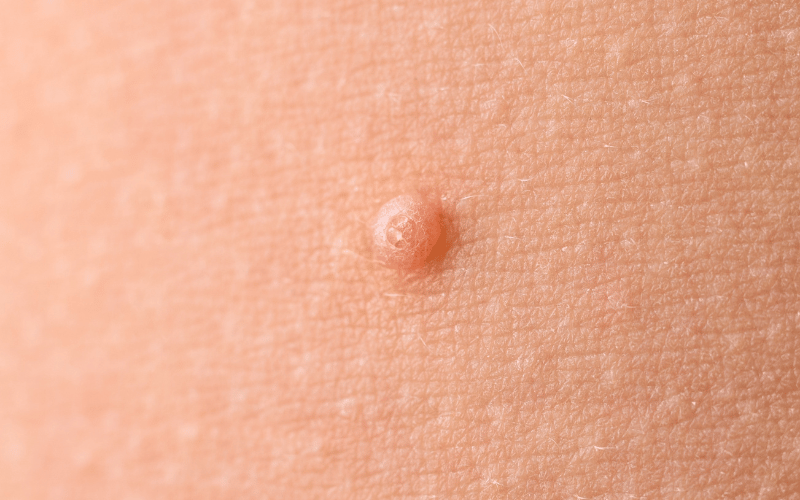6. Umbilicated Center: Molluscum Contagiosum’s Unique Impression

The world of dermatology boasts a plethora of terms, and when discussing molluscum contagiosum, ‘umbilicated’ takes center stage. It describes the small, central indentation or ‘dimple’ present on each papule. Think of it as a navel on the skin bump – a curious feature that not only makes MC distinctive but also fascinating.
This central dent is more than just a visual trait; it contains the core of the virus. If one were to dissect a papule – not advisable outside a clinical setting – they would find a thick, waxy substance within this core. This substance contains viral particles, the very agents causing the skin condition.
From a diagnostic standpoint, the umbilicated center is often the clincher. Other skin conditions might present as bumps, but few possess this distinctive dimple. It’s like nature’s own watermark, a signature that screams ‘molluscum contagiosum.’
While this feature is commonly associated with MC, its presence can vary. Some papules might exhibit a deep, pronounced indentation, while others could have a more subtle one. Factors like the bump’s size, age, and the individual’s skin type play a role in this variation.
In essence, the umbilicated center of MC’s papules is a masterclass in nature’s design. It’s a unique feature that showcases the virus’s lifecycle, aids in diagnosis, and stands as a testament to the myriad ways skin can react to viral invaders. (6)